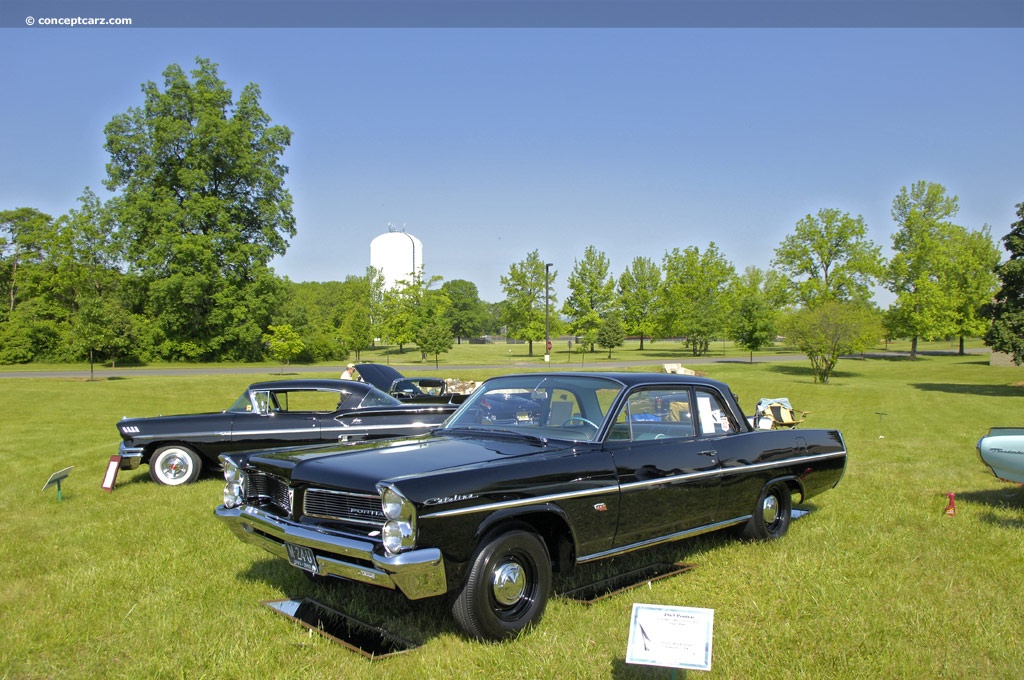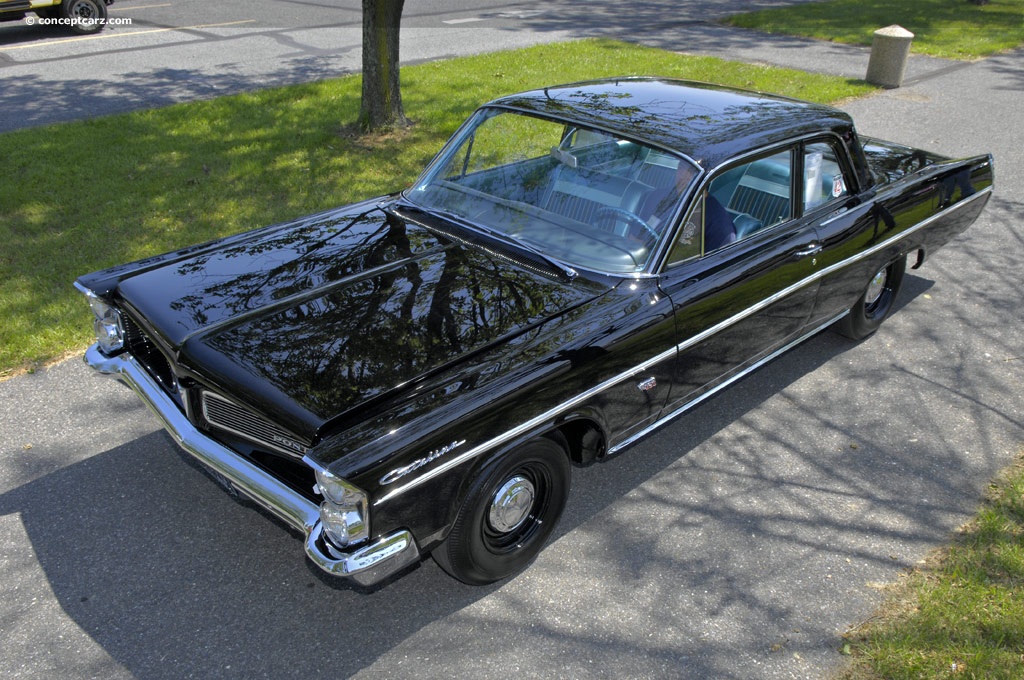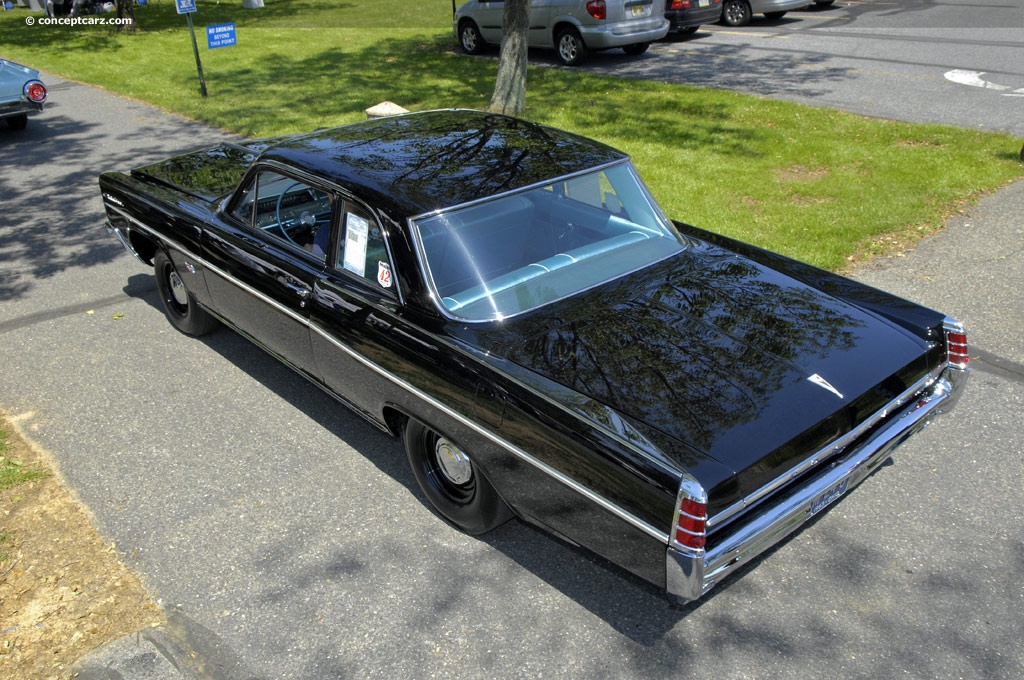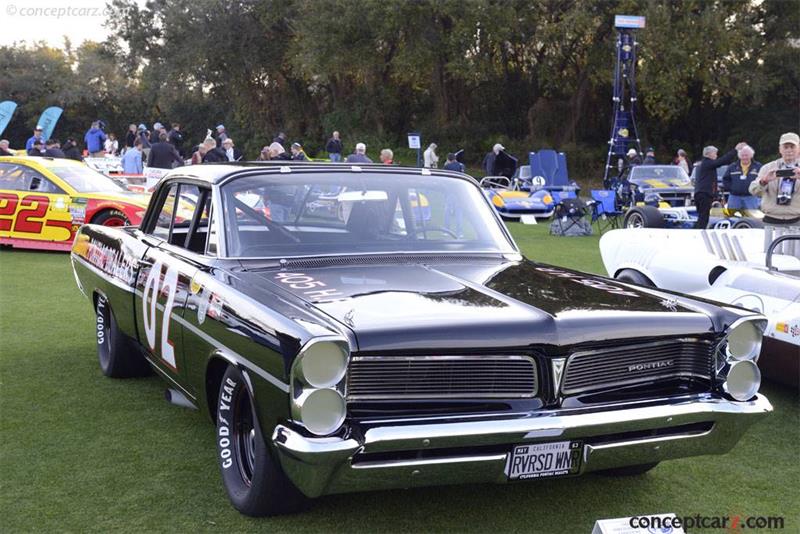Through the early 1960s, the large fins, excess trim, and flashy chrome were starting to subside. Semon 'Bunkie' Knudsen became general manager of the Pontiac Division in 1956, the same year John DeLorean accepted a position with Pontiac as the assistant to chief engineer Pete Estes. In 1961, DeLorean was promoted to the position of division chief engineer and his most notable contribution to the company was the Pontiac GTO (Grand Turismo Omologato), debuting in 1964 as a Tempest/LeMans option package with a larger, more powerful engine. This was the beginning of Pontiac's renaissance as GM's performance division instead of its previous position which had no clear brand identity. They were, however, known for their innovation and ingenuity. DeLorean and his team had been working on a car with all-independent suspension using swing axles at the rear. This led to the development of a rear transaxle and patented low-profile flexible driveshaft, which first appeared in 1961 in the all-new Tempest, which was powered by a 194.5 cubic-inch slant-four engine. 
SedanThe Catalina was part of Pontiac's full-sized line from 1950 to 1981, with the name 'Catalina' first appearing in 1950 on the Chieftain Series 25/27 hardtop, as Pontiac's top trim level at the time. It was later added to the Star Chief in 1954, Pontiac's equivalent of the Chevrolet Bel Air. Originally known as 'hard-top convertibles,' they had a pillarless design in the door and window area, with top-of-the-line convertible appointments and amenities. By the early 1960s, the Catalinas were part of America's emerging performance culture, spearheaded by the combination of the racing championship, aggressive styling, and savvy marketing. The Catalinas were the base model of the full-size line, offered with a vast list of interior accommodations, powertrain options, and various optional equipment. The 1961 full-sized Pontiacs received the split grilles first seen in 1959 with completely restyled bodies with more squared-off lines. In comparison to the 1960 model, they were lighter and slightly smaller, advertised as 'all Pontiac...on a new wide track.' The engines remained the 389 cubic-inch V8s as in previous years with the standard powerplant equipped with two-barrel carburetors, rated at 215 horsepower, and backed by the three-speed manual transmission. With the optional Hydramatic installed, horsepower rose to 267 horsepower. A regular-fuel economy V8, rated at 230 horsepower, was a no-cost option with the Hydra-Matic. 
SedanThe 1963 Catalina received exterior-design adaptations with crisper, well-defined body lines culminating with Coke-bottle-styled rear-fender lines, vertical headlamps, and split grille. Bodystyles included a coupe, hardtop, sedan, convertible, and station wagon. The 333 HP and 348 HP versions of the 389 V8 were dropped, replaced by the larger 421 cubic-inch engines rated at 338 hp with a four-barrel carburetor, 353 hp with Tri-Power, or a 370 hp 'HO' with Tri-Power. Racing teams were still offered the Super Duty 421 prior to the GM racing ban.New options for 1963 included an AM/FM radio, cruise control, and a tilt steering wheel that could be adjusted to six different positions.Competition
In the early 1960s, just prior to the start of the GM corporate-wide ban on racing, Pontiac's position atop of Super Stock competition was faltering, as Ford, Chrysler and Chevrolet were gaining on the Chiefs with an ever-increasing supply of special parts, weight-saving aluminum components and body panels, and bigger engines.
SedanAfter Royal Pontiac and Mickey Thompson dominated Super Stock and A/FX in 1962 with their own specially-prepared Tempest racers, Pontiac Motor Division built cars for the NHRA's Factory Experimental class, with 14 special lightweight Tempest racers – six LeMans coupes, six station wagons, and two standard coupes. They were all painted White and given Blue interior with bucket seats. In similar fashion to the Thompson built cars, Pontiac Engineering stuffed the cars with high compression, dual quad-equipped 421 CI Super Duty engines connected to a unique rear-mounted 4-speed automatic transmission. The sheet metal and brake drums were made from aluminum, bumpers and mounting brackets where acid dipped, and lightweight windshield glass installed, resulting in near-perfect 48/52 weight distribution while keeping the cars in line with the NHRA's 7.5 pounds-per-cubic-inch A/FX class weight limit.Pontiac built over-the-counter cars for both Stock and the Factory Experimental division, using the Super Duty Catalina model as its 'stock' entry with an extensive list of optional components and factory changes. Among the most famous and successful was the 'Swiss Cheese' Catalinas. The chassis was altered by cutting the inside section away from the boxed rails, leaving a U-shaped section. The sides of the frame rails were then drilled with approximately 120 holes. In an effort to reduce weight to the max, as much material as possible was removed while trying to maintain a semblance of structural integrity. Additional modifications involved removed the front sway bar, replaced by an aluminum bellhousing and third member for the original pieces. Non-essential items such as sound deadener was removed, and aluminum was used for the body panels, hood, inner and outer front fenders, radiator bulkhead, bumpers, brackets, and splash pan. Special high-flow aluminum components were used in place of the cast iron exhaust manifolds. The 421 cubic-inch engine was given 13.0:1 Mickey Thompson pistons, a #10 McKellar camshaft, and lightweight valves in reworked heads, heavy-duty rotating assembly and a lightweight flywheel. Twin Carter AFBs carburetors were placed atop a special aluminum manifold. The car's total weight was 3,308 pounds and the 410 horsepower engine propelled it to 12-second times at 120 MPH. The engines were originally backed by Borg Warner 3-speeds with aluminum tail sections and aluminum-case 4.30:1 Positraction differentials. Many 'Swiss Cheese' were later converted to close-ratio BW 4-speed sand either 4.88 or 4.56 rear gears.
SedanAmong the many accolades earned by the 'Swiss Cheese' Catalinas include the Packer Pontiac of Detroit Sponsored car driven by Howard Maselles to an NHRA C/Stock class record with a 12.27 ET at 114.64 MPH, a record that remained for several years.Fourteen examples of the 'Swiss Cheese' Catalinas were built prior to the ban on racing, introduced in late January 1963 by GM President Ed Cole, under the possible threat of an anti-trust investigation by the Bobby Kennedy Justice Department. Chevrolet was able to build 57 Z11s before the ban.
by Daniel Vaughan | Apr 2020

Sedan

Sedan
In the early 1960s, just prior to the start of the GM corporate-wide ban on racing, Pontiac's position atop of Super Stock competition was faltering, as Ford, Chrysler and Chevrolet were gaining on the Chiefs with an ever-increasing supply of special parts, weight-saving aluminum components and body panels, and bigger engines.

Sedan

Sedan
by Daniel Vaughan | Apr 2020
Related Reading : Pontiac Catalina History
The vehicle of choice for full-size performance aficionados, the Pontiac Catalina was the least expensive and the lightest of Pontiacs full-size coupes and convertibles. Strongly establishing Pontiacs performance image, the Catalina featured light-weight body panels, Super Duty engines, and other innovative modifications. Part of Pontiacs full-sized automobile line, the Catalina name was originally....
Continue Reading >>
Continue Reading >>
1963 Pontiac Catalina Vehicle Profiles
Recent Vehicle Additions
Related Automotive News

BARRETT-JACKSON TO AUCTION RARE VINTAGE RACE CARS DURING 45TH ANNIVERSARY AUCTION IN SCOTTSDALE
Crossing the block from the Chip Miller Collection will be the 1959 Corvette Purple People Eater (Lot #1389), which won the SCCA National Championship
One of six original factory-backed NASCAR race cars, the famous 1957 Chevrolet 150 Black Wido...

Dodge Announces New Direct Connection Performance Parts Lineup, Parts Catalog and Technical Hotline
Dodge announces key parts that will launch Direct Connection, the Dodge brands exclusive source of factory-backed performance parts, including New Tuner and Stage kits that can boost the Dodge Challenger SRT Hellcat Redeye and Challenger SRT...

New 'Leader Of The Pak:' Order Reservations Open For Quickest, Fastest And Most Powerful Dodge Challenger Mopar Drag Pak Ever
Starting today, Sept. 2, 2020, dealers and customers can now contact the DodgeSRT Concierge at (800) 998-1110 to register for the opportunity to order the new 2021 Dodge Challenger Mopar Drag Pak
Order reservations for the new 2021 Dodge Challeng...

Classic, Late-Model Ford Mustangs Will Stampede into Las Vegas for the 11th Annual Barrett-Jackson Auction
LAS VEGAS – September 18, 2018 – Classic, custom and late-model Ford Mustangs will rumble into the 11th Annual Barrett-Jackson Las Vegas Auction at the Mandalay Bay Resort and Casino, Sept. 27-29, 2018. This years auction docket will include...

15 Exciting Collector Automobiles to Watch During This January's Scottsdale, Arizona Car Week Auctions
Scottsdale, Arizona (January 13th, 2016) – Astute Collectors of the worlds most sought after and most valuable automobiles know that Scottsdale, Arizona in January is where the market values for collector cars are established each year. As such, they...

Chevy Performance Rolls with Hot Rod Magazine Power Tour
Weeklong drive kicks off with unprecedented access to GMs Milford Proving Ground
Road trip! Its that time of year again for the annual automotive pilgrimage known as the Hot Rod Magazine Power Tour® and Chevrolet Performance helps get it started...






































